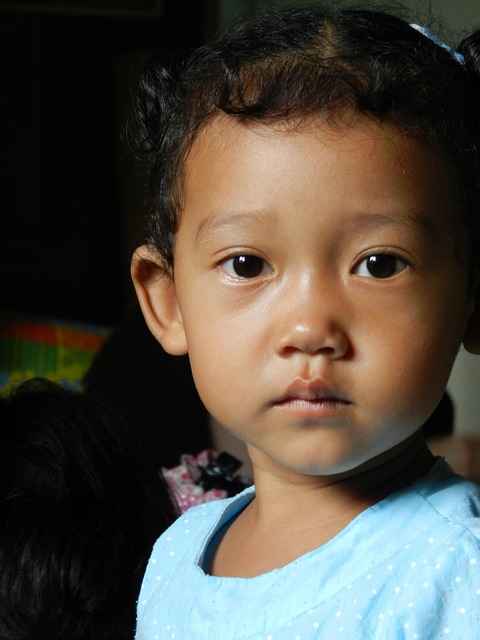Understanding child welfare laws is crucial for parents to protect their rights and their child's safety from abuse, neglect, and exploitation. By familiarizing themselves with legal frameworks, parents can proactively safeguard their child's interests and navigate challenges effectively. A holistic approach to supporting children and families includes specialized counseling, financial aid, educational opportunities, community networks, and trauma recovery services, addressing immediate needs and future prospects for enhanced child welfare.
Child welfare is paramount for every society. Ensuring the safety and well-being of our youngest members involves understanding legal rights and obligations under child welfare laws. This article guides you through crucial aspects, from recognizing signs of abuse and neglect to navigating legal actions for protection.
We’ll explore resources supporting children and families, emphasizing that long-term welfare is a collective responsibility. Get equipped with knowledge to make a positive impact in the lives of vulnerable children.
- Understanding Child Welfare Laws and Your Rights
- Recognizing Signs of Child Abuse and Neglect
- Legal Actions to Protect Children: Options and Steps
- Supporting Children and Families: Resources and Long-term Welfare
Understanding Child Welfare Laws and Your Rights

Understanding Child Welfare Laws is a crucial step in ensuring your rights and the safety of your child. These laws are designed to protect children from abuse, neglect, and exploitation, and to promote their overall well-being. Familiarizing yourself with the legal framework in your jurisdiction allows you to take proactive measures to safeguard your child’s interests. By knowing what constitutes child welfare, including reporting obligations and intervention strategies, parents can better navigate potential challenges and seek appropriate support when needed.
Your rights as a parent are integral to this process. Child welfare laws provide parental rights and responsibilities, ensuring that parents are involved in decisions affecting their children. This includes the right to be informed about any allegations or concerns regarding your child’s welfare, to participate in case planning, and to challenge any legal actions that may impact your family. Understanding these rights empowers you to actively contribute to your child’s safety and future.
Recognizing Signs of Child Abuse and Neglect

Recognizing signs of child abuse or neglect is a crucial step in ensuring their safety and well-being. It often involves subtle cues that might go unnoticed by the untrained eye, but with awareness, anyone can become an important ally in protecting vulnerable children. Physical indicators such as unexplained bruises, cuts, or scars, along with behavioral changes like sudden aggression, extreme withdrawal, or fear of certain people or places, could be red flags.
Emotional and psychological signs are equally significant. A child who exhibits extreme anxiety, depression, or has a distorted sense of reality might be experiencing abuse or neglect. Additionally, persistent lying, manipulation, or a history of running away from home can raise concerns about their welfare. By being attentive to these signals, individuals can take proactive measures to intervene and connect families with necessary support systems for child welfare.
Legal Actions to Protect Children: Options and Steps

When it comes to safeguarding a child’s welfare, legal action serves as a powerful tool for intervention and protection. Parents, guardians, or concerned individuals can take several steps to ensure a child’s safety, especially in cases of abuse, neglect, or exploitation. One common approach is filing a petition with the court system, which may result in temporary or permanent custody arrangements being put in place. This process involves presenting evidence and arguments that demonstrate the need for legal intervention to protect the child.
The options available include seeking emergency protective orders to immediately remove a child from a harmful environment, initiating guardianship proceedings to appoint a trusted individual as the child’s legal guardian, or filing for adoption if all other efforts have failed. Each step requires careful consideration and consultation with legal professionals who specialize in family law and child welfare. By understanding these options and taking prompt action, individuals can play a crucial role in ensuring a child’s long-term safety and well-being.
Supporting Children and Families: Resources and Long-term Welfare

Supporting children and families is a multifaceted effort that goes beyond immediate safety. Beyond legal action, various resources are available to foster long-term child welfare. These include specialized counseling services tailored to help children process trauma and rebuild resilience, as well as financial aid programs designed to alleviate economic burdens and create stability. Many communities also offer access to educational and vocational training opportunities, empowering young people to achieve their potential and break cycles of adversity.
The focus on long-term welfare involves building supportive networks that extend beyond the initial intervention. This includes connecting families with community resources like childcare services, mentorship programs, and job training, which are crucial for establishing a sense of belonging and promoting healthy development. By addressing both immediate needs and future prospects, these comprehensive support systems contribute to the holistic well-being of children and families, ensuring they have the tools and opportunities to thrive.
Protecting children’s safety and welfare is a collective responsibility, and understanding legal rights and actions is a powerful tool. By recognizing signs of abuse and taking proactive measures, individuals can make a significant impact. Legal action plays a crucial role in ensuring children’s well-being, providing a framework to hold perpetrators accountable and offer support to affected families. With the right knowledge and resources, we can create a safer environment for children, fostering a brighter future through informed actions and compassionate support systems.
